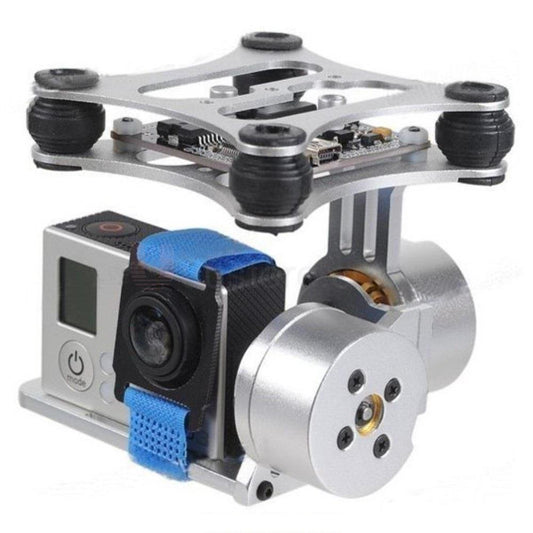Collection: Drone Gimbal
Drone Gimbal, Drone Camera Gimbal, FPV Gimbal
Drone Gimbal:
Definition: A drone gimbal is a mechanical device used to stabilize and control the orientation of a camera or other payloads mounted on a drone. It consists of motors, sensors, and control algorithms that work together to counteract the drone's movements and keep the camera level and steady, resulting in smooth and vibration-free footage.
Functions: The main functions of a drone gimbal include:
-
Stabilization: The gimbal's primary function is to stabilize the camera or payload mounted on the drone. It counteracts the drone's movements, such as pitch, roll, and yaw, to ensure that the camera remains level and steady, even during dynamic flight maneuvers.
-
Camera Control: Gimbals often provide additional control functions, such as tilt and pan, allowing the operator to adjust the camera's angle and perspective remotely. This enables capturing different angles and shots during flight.
Types: There are different types of drone gimbals available, depending on the intended application and camera setup:
-
2-Axis Gimbal: A 2-axis gimbal stabilizes the camera along two axes, typically pitch and roll. This type of gimbal is commonly used in smaller drones or applications where basic stabilization is sufficient.
-
3-Axis Gimbal: A 3-axis gimbal stabilizes the camera along all three axes: pitch, roll, and yaw. This provides superior stabilization and is commonly used in professional-grade drones or applications where precise and smooth footage is essential.
Parameters: Consider the following parameters when selecting a drone gimbal:
-
Payload Compatibility: Ensure that the gimbal is compatible with your specific camera or payload. Consider the weight, size, and mounting options to ensure a secure fit.
-
Stabilization Performance: Look for gimbals that offer smooth and precise stabilization, with minimal vibrations and jitters. Check for parameters such as stabilization range and response time.
-
Control Options: Consider the available control options for the gimbal, such as manual control through a remote controller or automatic control through flight modes. Choose a gimbal that provides the level of control you need.
Selection Method: When selecting a drone gimbal, consider the following factors:
-
Camera Compatibility: Ensure that the gimbal is compatible with your camera model, taking into account weight, dimensions, and mounting requirements.
-
Gimbal Integration: Check if the gimbal is designed to integrate seamlessly with your specific drone model or flight controller. Compatibility can ensure optimal performance and ease of installation.
-
Performance and Reviews: Research user reviews and feedback to gauge the gimbal's performance and reliability. Look for gimbals that have positive reviews for their stabilization capabilities and build quality.
Precautions: When using a drone gimbal, keep the following precautions in mind:
-
Balance the Payload: Properly balance the camera or payload on the gimbal to ensure optimal stabilization and minimize strain on the gimbal motors.
-
Avoid Collisions: Be mindful of the gimbal's extended size and movement range. Take care to avoid collisions with obstacles or the drone's own components during flight.
Brands: There are several well-known brands that offer high-quality drone gimbals. Here are a few examples:
- DJI
- Freefly Systems
- Zhiyun
- Feiyu Tech
- Gremsy
- Moza
Consider the brand's reputation, customer reviews, and compatibility with your specific drone model when selecting a gimbal for your needs.







